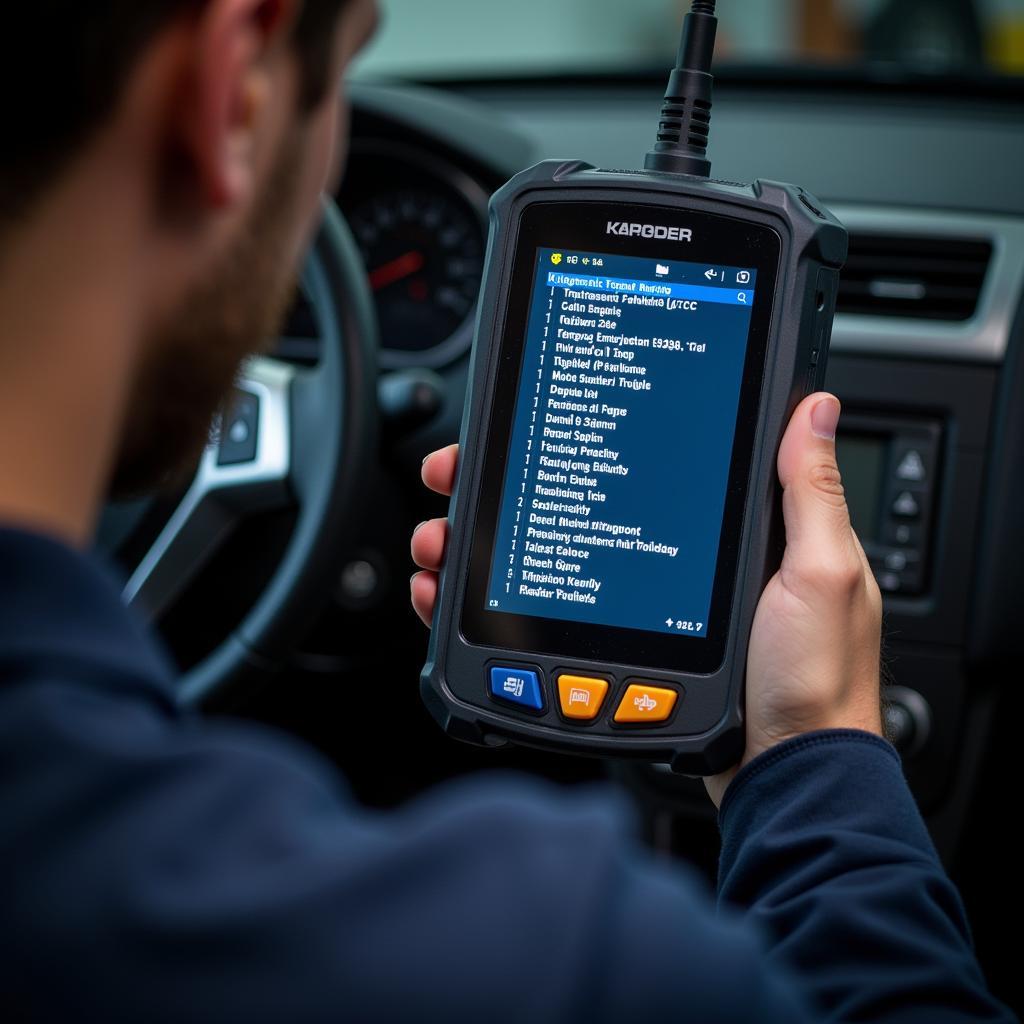A car diagnostic test, often referred to as an OBD-II scan, is like a health check for your vehicle. By plugging a scan tool into your car’s onboard computer, mechanics can access a wealth of information about your car’s systems and their performance. This information can help pinpoint the root of car problems, from minor glitches to major malfunctions.
So, what exactly shows up on a car diagnostic test?
Decoding the Data: Understanding Diagnostic Trouble Codes (DTCs)
The most common output of a car diagnostic test is a series of Diagnostic Trouble Codes (DTCs). These codes, appearing as a combination of letters and numbers, act as indicators of potential issues within your vehicle’s systems.
 Diagnostic trouble codes displayed on a scanner
Diagnostic trouble codes displayed on a scanner
For example, a code like “P0420” might indicate a problem with the catalytic converter system, while “P0101” could signal an issue with the mass airflow sensor.
It’s important to remember that DTCs are not a diagnosis in themselves. They are clues, providing a starting point for further investigation by a qualified mechanic.
Beyond the Codes: Additional Insights from a Car Diagnostic Test
Besides DTCs, a car diagnostic test reveals a wide range of data points that paint a comprehensive picture of your car’s health. This data can include:
- Sensor Readings: The test retrieves real-time data from various sensors throughout your car, such as the oxygen sensor, throttle position sensor, and coolant temperature sensor. This information helps assess if sensors are functioning correctly and if systems are operating within normal parameters.
- Freeze Frame Data: When a fault code is triggered, the car’s computer stores a snapshot of the engine’s operating conditions at that moment. This “freeze frame” data can be crucial in diagnosing intermittent problems that might not be present during the actual test.
- Readiness Monitors: Modern vehicles have built-in self-monitoring systems for emissions control. The diagnostic test can show the status of these monitors, indicating if all systems are working properly to meet emissions standards.
The Value of a Car Diagnostic Test: From Prevention to Repair
A car diagnostic test isn’t just for troubleshooting existing problems; it’s also a powerful tool for preventative maintenance. Regular diagnostic tests can help identify minor issues before they escalate into major (and expensive) repairs.
“Think of a car diagnostic test like a routine check-up with your doctor,” explains John Smith, Lead Mechanic at ABC Auto Services. “Just like early detection of health issues is crucial for our well-being, identifying potential problems early on in your car can save you time, money, and potential headaches down the road.”
Common Questions About Car Diagnostic Tests
Here are some frequently asked questions about car diagnostic tests:
1. How often should I get a car diagnostic test?
It’s generally recommended to get a car diagnostic test annually, or whenever your check engine light comes on.
2. Can I perform a car diagnostic test myself?
Yes, affordable OBD-II scanners are available for personal use. However, interpreting the results and diagnosing the problem accurately often requires the expertise of a qualified mechanic.
3. Will a car diagnostic test drain my car battery?
No, a car diagnostic test uses minimal power and won’t drain your car battery.
 A mechanic plugging a diagnostic scanner into a car’s OBD-II port.
A mechanic plugging a diagnostic scanner into a car’s OBD-II port.
Getting to the Root of Car Troubles
Understanding What Shows Up On A Car Diagnostic Test empowers car owners to be more informed about their vehicle’s health. While the technical details might seem complex, the key takeaway is this: a car diagnostic test is an invaluable tool for diagnosing car problems, guiding repairs, and ensuring your car runs smoothly for miles to come.
For any assistance or if you need a car diagnostic test, please contact us through WhatsApp: +1(641)206-8880 or Email: [email protected]. Our customer support team is available 24/7 to assist you.

Leave a Reply